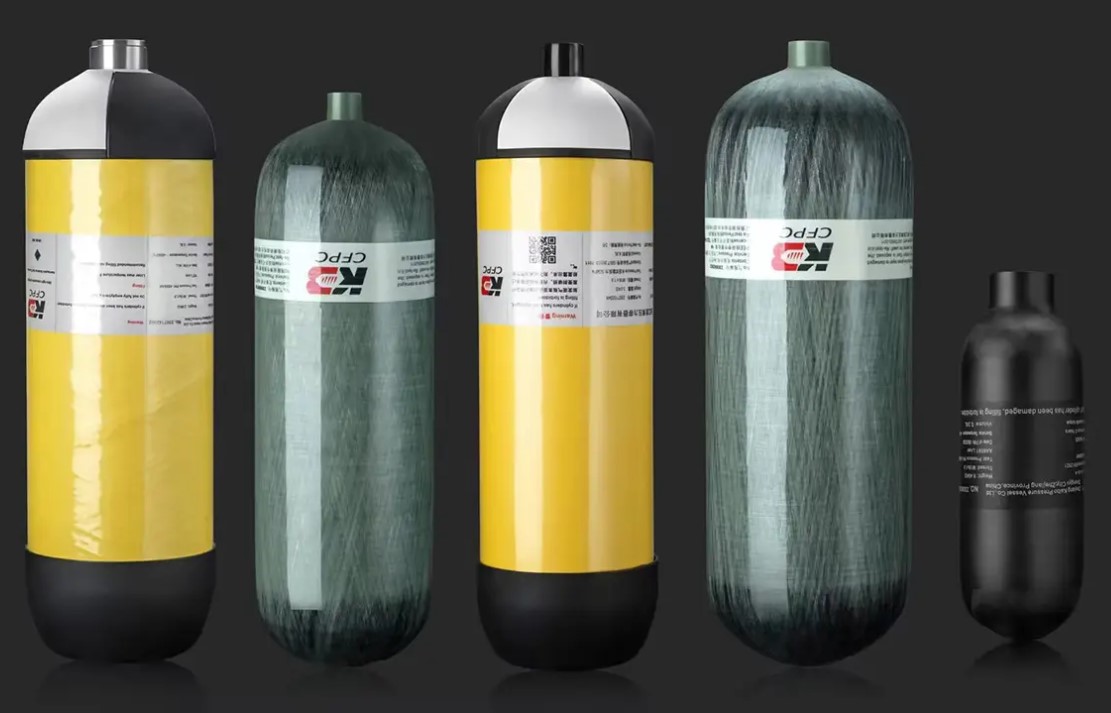For paintball enthusiasts, carbon fiber cylinders are an essential component of their gear. Known for their lightweight design and high pressure capacity, these cylinders allow players to maintain a competitive edge with enhanced mobility and reliable performance. However, to ensure their longevity and effectiveness, proper maintenance is crucial. This article provides practical tips and best practices for maintaining carbon fiber cylinders, covering aspects such as storage, cleaning, regular inspections, and safety checks. By following these guidelines, you can enhance the durability and performance of your carbon fiber cylinders, ensuring they remain safe and efficient for your paintball adventures.
Understanding Carbon Fiber Cylinders
Carbon fiber cylinders are renowned for their strength-to-weight ratio, making them a preferred choice over traditional aluminum tanks in paintball. The composite construction of these cylinders involves wrapping carbon fiber around an aluminum core, allowing them to withstand high pressure while remaining lightweight. However, the intricate design requires careful handling and maintenance to prevent damage and ensure optimal performance.
The Importance of Regular Maintenance
Regular maintenance of carbon fiber cylinders is essential for several reasons:
-Safety: Ensuring the cylinder is in good condition reduces the risk of leaks or catastrophic failures during gameplay.
-Performance: Proper maintenance guarantees consistent airflow, allowing for accurate shots and reliable performance on the field.
-Longevity: Regular care and inspections can significantly extend the lifespan of the cylinder, offering more value for your investment.
Below are some key maintenance practices that paintball enthusiasts should adopt to maximize the life and performance of their carbon fiber cylinders.
Proper Storage Techniques
Proper storage is the first line of defense in maintaining the integrity of your carbon fiber cylinders. Here are some tips to ensure your cylinders are stored correctly:
1. Temperature Control
Carbon fiber cylinders should be stored in a cool, dry place away from direct sunlight and extreme temperatures. Exposure to high temperatures can weaken the composite material, while freezing conditions may cause internal damage or stress. Ideally, store your cylinders indoors in a climate-controlled environment to prevent these issues.
2. Avoiding Moisture
Moisture is a significant concern for carbon fiber cylinders, as it can lead to corrosion of the aluminum core over time. Ensure that the storage area is free from humidity and dampness. Use silica gel packs or a dehumidifier to control moisture levels if necessary.
3. Proper Positioning
Store the cylinders in an upright position to prevent deformation and undue stress on the valve system. Using cylinder stands or racks can help maintain this position and protect the cylinders from accidental knocks or falls.
4. Pressure Management
Never store a carbon fiber cylinder at full pressure for extended periods. It’s best to leave the cylinder at a safe pressure level (around 1,000 PSI) to reduce stress on the tank walls and valve system. Before storing, release the excess pressure gradually to avoid damaging the O-rings and seals.
Cleaning and Maintenance Practices
Regular cleaning is crucial for maintaining the appearance and functionality of carbon fiber cylinders. Here are some effective cleaning practices:
1. External Cleaning
Wipe the cylinder’s exterior with a soft, damp cloth to remove dirt, dust, and paint residues. Avoid using abrasive materials or harsh chemicals that can scratch or damage the carbon fiber surface. Mild soap and water should suffice for most cleaning needs.
2. Valve and O-ring Care
Inspect the valve system and O-rings regularly for signs of wear or damage. Clean the valve with a soft brush to remove any debris that might obstruct airflow. Apply a light coat of silicone lubricant to the O-rings to maintain their elasticity and prevent leaks.
3. Hydrostatic Testing
Hydrostatic testing is a critical maintenance procedure for carbon fiber cylinders. This test checks the tank’s structural integrity by filling it with water and pressurizing it to a specified level. In the United States, the Department of Transportation (DOT) mandates hydrostatic testing every five years for most carbon fiber cylinders.
Ensure your cylinder undergoes this testing within the required timeframe. Always have the test conducted by certified professionals to guarantee accuracy and compliance with safety standards.
4. Visual Inspections
Perform regular visual inspections of your carbon fiber cylinder to detect any signs of damage or deterioration. Look for:
-Cracks or Delamination: Inspect the surface for any visible cracks, scratches, or areas where the carbon fiber seems to be peeling away from the core.
-Corrosion: Check the valve and neck area for any signs of corrosion or rust.
-Leaks: Listen for any hissing sounds or use a soapy water solution to detect leaks around the valve or body of the cylinder.
If you notice any issues, refrain from using the cylinder until it has been examined and repaired by a qualified technician.
Safety Checks and Handling Tips
Safety should always be a priority when handling high-pressure carbon fiber cylinders. Here are some safety checks and handling tips to ensure safe usage:
1. Inspect Before Use
Before heading to the field, inspect your carbon fiber cylinder thoroughly. Ensure the valve is secure, there are no visible damages, and the pressure level is within the safe operating range for your marker.
2. Safe Filling Practices
When filling your cylinder, always use a high-quality, clean air source. Avoid overfilling, as excessive pressure can damage the cylinder and pose a safety risk. Follow the manufacturer’s guidelines for the maximum fill pressure and adhere to them strictly.
3. Transport with Care
Transport your carbon fiber cylinder securely to prevent it from rolling around or sustaining impacts during transit. Use padded bags or cases specifically designed for paintball gear to provide added protection.
4. Avoid Dropping
Carbon fiber cylinders are durable but can still sustain damage from drops or heavy impacts. Handle your cylinder with care and avoid situations where it could fall or be subjected to physical trauma.
Conclusion
Maintaining your carbon fiber cylinder is essential to ensuring its safety, performance, and longevity. By following the tips outlined in this article, paintball enthusiasts can keep their cylinders in optimal condition, ready for intense gameplay. Proper storage, regular cleaning, inspections, and adherence to safety guidelines will not only extend the life of your cylinder but also enhance your overall paintball experience. Investing time in maintaining your equipment ensures you get the most out of your gear and stay safe on the field.
Post time: Aug-01-2024



